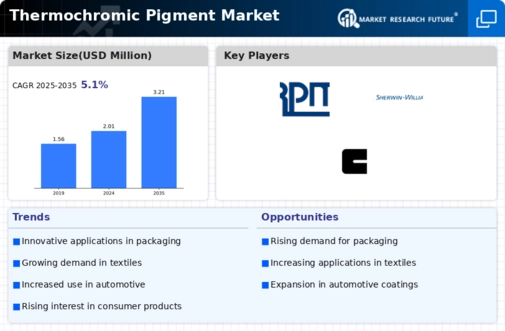Market Share
Thermochromic Pigment Market Share Analysis
In the vibrant landscape of the Thermochromic Pigment market, companies navigate various strategies to position themselves effectively and secure market share. One prominent tactic is differentiation, wherein companies accentuate unique product features or qualities to stand out from competitors. For instance, some Thermochromic Pigment manufacturers may spotlight attributes like color-changing capabilities, sensitivity to temperature shifts, or versatility across different substrates, enticing customers seeking these specific effects for their applications. By offering distinct advantages, these companies carve out a niche within the market and attract clients with tailored needs or preferences.
Cost leadership also emerges as a significant strategy in the Thermochromic Pigment market, as companies strive to become the most cost-efficient producers. This entails optimizing manufacturing processes, sourcing raw materials judiciously, and minimizing overheads to provide competitive pricing. By delivering cost-effective solutions, companies appeal to budget-conscious customers and bolster their market share. However, sustaining cost leadership necessitates ongoing efforts to enhance efficiency and control operational expenses amidst competitive pressures.
Market segmentation plays a pivotal role in market share positioning within the Thermochromic Pigment industry. Companies often target specific customer segments based on industry verticals, applications, or geographical regions. For instance, some manufacturers might concentrate on serving the packaging sector for temperature-sensitive labels, while others cater to the textile, printing, or novelty items markets. By discerning the unique demands and preferences of diverse customer segments, companies tailor their offerings and marketing strategies to align with distinct market needs, solidifying their positions as leaders in their chosen niches.
Innovation serves as a driving force behind market share positioning strategies in the Thermochromic Pigment market. Companies that invest in research and development to pioneer new pigment formulations, expand color options, or enhance durability and stability gain a competitive edge. By introducing innovative solutions that promise enhanced performance, versatility, or customization options, companies differentiate themselves from competitors and captivate customers seeking cutting-edge products. Continuous innovation remains crucial for staying ahead in a dynamic market and maintaining a robust market position. Growing demand for thermochromic pigments in various end-use industries such as paints & coatings, printing ink; and food & beverages are expected to drive the market growth in the coming years.
Strategic partnerships and collaborations emerge as pivotal components of market share positioning within the Thermochromic Pigment industry. By forging alliances with suppliers, distributors, or other stakeholders, companies gain access to new markets, technologies, or resources. Collaborative ventures enable companies to leverage complementary strengths and capabilities, delivering value to customers and gaining a competitive advantage. Strategic partnerships also unlock avenues for market expansion and diversification, empowering companies to broaden their reach and capitalize on emerging trends.
Market expansion constitutes a crucial aspect of market share positioning strategies in the Thermochromic Pigment market. Companies often pursue growth opportunities by venturing into new geographical territories or diversifying their product portfolios to cater to additional customer segments. This could entail investing in distribution networks, establishing local manufacturing facilities, or acquiring competitors to access new markets or technologies. By expanding their footprint and diversifying their offerings, companies mitigate risks and seize opportunities for growth in an ever-evolving market landscape.






Leave a Comment